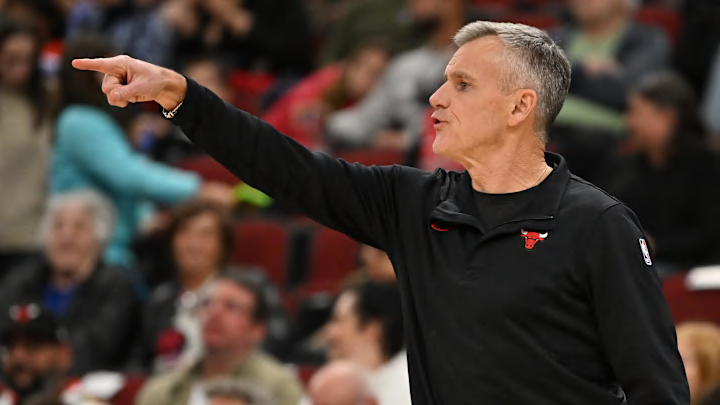The Chicago Bulls are the fastest team in the NBA. Wait… they’re not? Even at 4-0? Surely they’re top five, right? Nope. Despite their sweltering start, Chicago ranks just seventh in pace through the first week of the season.
A year ago, the Bulls ranked second in pace at 103.61—just 0.08 behind the league-leading Memphis Grizzlies. Back then, only 13 teams played with a pace above the triple-digit mark. This season, that number has jumped to 22. It’s not just the Bulls pushing the tempo; much of the league has made a concerted effort to get out and run.
If the Bulls want to run, it starts with stops
Despite the clear emphasis on playing fast in Chicago, how can the Bulls climb back onto the podium of the NBA’s fastest teams? The answer is actually pretty simple, and it’s the same one as last season. The Bulls need to force more turnovers. Chicago ranked 28th in opponent turnovers a year ago and currently sits dead last. Until the Bulls generate more live-ball turnovers, their pace will hit a ceiling, no matter how fast they want to play.
The Bulls are forcing just 11.5 turnovers per game, nearly two fewer than the 29th-ranked Indiana Pacers. That’s a massive gap for a team hellbent on getting out in transition. Only one Bull is averaging more than a single steal per contest: Tre Jones, who’s actually leading the entire league at 3.0 per game.
Chicago’s saving grace has been its rebounding. The Bulls rank fourth in the NBA with 37.0 defensive boards per game. It’s not that they’re an elite rebounding team—their contested rebound rate leaves plenty to be desired—but their strong half-court defense has held opponents to lower shooting percentages, creating more opportunities to grab those misses.
Still, pushing the pace off of defensive rebounds isn’t always realistic. The Bulls are fortunate that Josh Giddey, second on the team with 7.3 defensive rebounds per game, also happens to be their primary initiator. Matas Buzelis has also shown the ability to grab-and-go. He ranks fourth on the team with 3.3 defensive boards.
Ultimately, the root of the problem is that the Bulls simply aren’t forcing the issue defensively. They have capable point-of-attack defenders in Jones and Isaac Okoro, but beyond that, the group doesn’t generate steals, deflections, or loose balls. Chicago ranks 26th in steals, 24th in deflections, and 28th in defensive loose balls recovered—numbers that paint the picture of a defense that’s reactive, not disruptive.
Being reactive and holding firm has worked so far; Chicago is 4-0, after all. But with an undefeated start comes heightened expectations. The Bulls’ once-lauded offense has been painfully average, ranking 15th in offensive rating through four games. Getting out in transition remains central to Billy Donovan’s vision, and forcing more turnovers is the simplest path to unlocking that identity.
